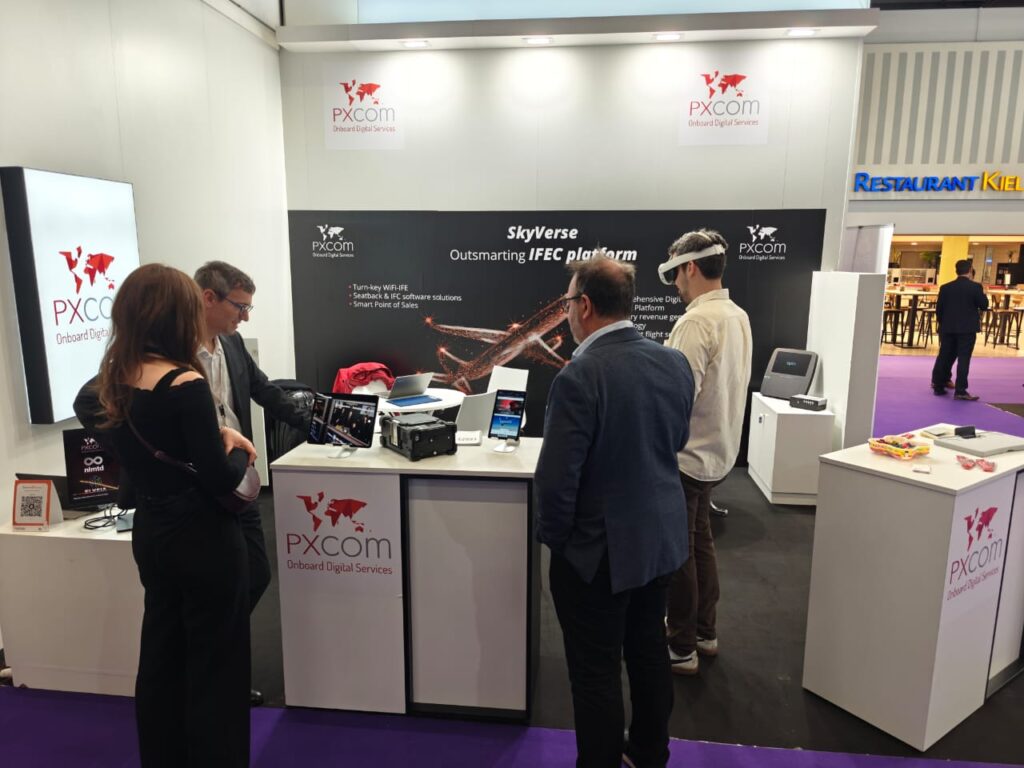


As AIX 2025 wrapped up last week, industry leaders unveiled innovations that are set to define the next era of inflight experience, connectivity, and cabin design. Here’s our expert digest on the key announcements and what they mean for airlines and passengers alike.
Source: Inflight
Panasonic Avionics has unveiled Converix, a new hosting platform aimed at giving airlines more control and flexibility over their digital inflight experience. This is great news for carriers seeking to collaborate with the partner of their choice for graphical user interface (GUI) design and other digital inflight services. By decoupling content and applications from hardware, Converix empowers airlines to deliver richer, more tailored passenger experiences without being locked into a single vendor ecosystem.
Source: Runway Girl Network
Runway Girl Network, a respected media outlet covering passenger experience and cabin innovations, recently reported on a new step forward in personalized inflight entertainment.
At AIX 2025, PXCom presented its latest SkyVerse update, a browser-based IFE and connectivity portal that now integrates airlines’ CRM systems to offer passengers tailored content, services, and e-commerce options. What’s more, an AI chatbot — described as an industry first — interacts with passengers mid-flight, acting like a personal travel assistant.
By syncing pre-flight CRM data with onboard systems, SkyVerse can suggest entertainment, meals, shopping items, or travel partners such as hotels and car rentals. It’s also designed to support real-time updates to the interface, including promotional content and route-specific offers. SkyVerse was shortlisted for a 2025 Crystal Cabin Award.
This evolution reflects a broader trend in aviation: using digital ecosystems to deepen personalization while ensuring data protection compliance, especially under regulations like the EU’s GDPR.
Source: Aviation Business News & Safran Group
This year’s Crystal Cabin Awards showcased some impressive breakthroughs:
– Galley.ai, a winner in the digital services category, introduces AI-powered tools to optimize inflight retail. For airlines, the benefits are clear—provided their onboard retail partners offer open APIs and integration-ready platforms.
– Safran took home its 16th Crystal Cabin Award with its Connected Interiors innovation. By leveraging IFC and Wireless IFE platforms, this technology helps airlines reduce maintenance costs while enhancing the passenger experience. The combination of smart monitoring and predictive maintenance is paving the way for more efficient operations in the cabin.
Source: APEX
Viasat is reinforcing its multi-orbit connectivity vision by integrating Telesat’s Lightspeed LEO capacity into its network. Alongside this, it introduced Amara, its next-generation IFC solution. This move further positions Viasat as a leader in flexible, high-capacity inflight broadband—allowing airlines to balance performance, cost, and geographic coverage like never before.
Source: APEX
Air Canada is the first North American airline to roll out Airbus’ A220 Airspace Cabin, enhancing passenger comfort and setting a new standard in narrowbody design. In connectivity news, Amazon’s Project Kuiper has officially joined the HBCplus initiative. This marks Amazon’s long-awaited entry into the LEO connectivity arena. The integration of AWS infrastructure with Kuiper could become a game-changer—but the industry will be watching closely to see how it performs in early tests.
The recently concluded AIX 2025 confirmed the aviation industry’s momentum toward smarter, more personalized, and more connected inflight experiences. From AI-driven retail to multi-orbit IFC and modular cabin platforms, the future of flying is being redefined—and it’s more flexible and passenger-centric than ever before.
TRAVELER’S MICRO-MOMENTS Home Capturing the Traveler's Micro-Moments 26 April 2022 microMoments, Technology, traveler Time Is No Longer Measured in Days,…
IFE TO THE RESCUE Home WHEN IFE COMES TO THE RESCUE OF FLIGHT ATTENDANTS! 25 June 2022 Digital Services, IFE,…
Digital AD: IVT-FREE Zone Home DIGITAL INFLIGHT ADVERTISING: AN IVT-FREE ZONE 20 May 2022 Advertising, IVTFREE, Technology In late 2015,…